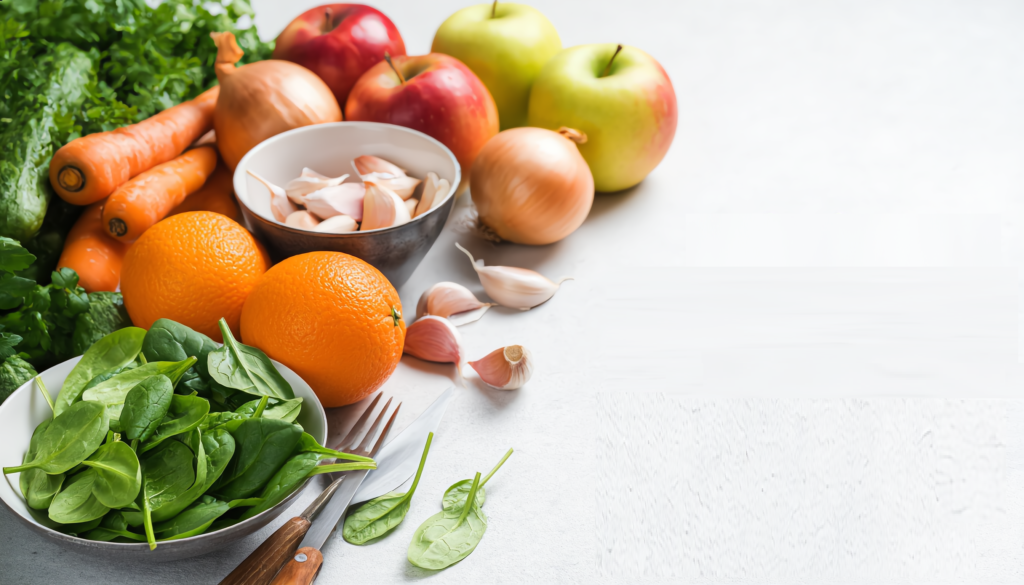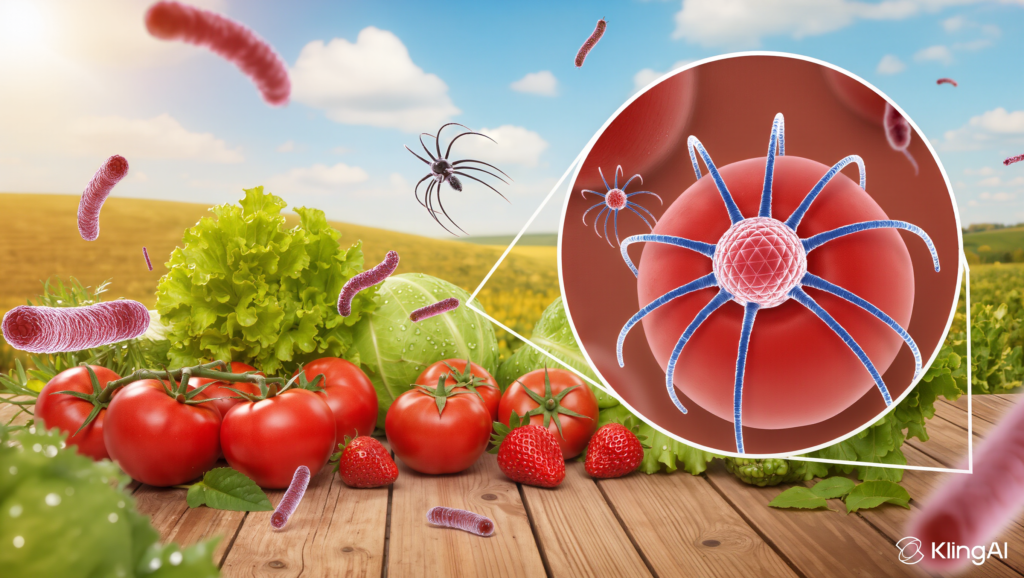If you’ve ever felt like your gut is staging a full-blown mutiny after eating certain foods—think bloating, cramping, gas, or unpredictable bathroom trips—you’re not alone. For people with irritable bowel syndrome (IBS) or small intestinal bacterial overgrowth (SIBO), these symptoms can be a daily struggle. Enter the FODMAP diet: a science-backed, step-by-step approach to identifying which foods are triggering your digestive drama and which ones let you eat in peace. In this guide, we’ll break down everything you need to know about high-FODMAP foods, how the diet works, and how it can help you find gut relief—all in a way that’s easy to digest (pun intended).
What Is the FODMAP Diet?
Let’s start with the basics. FODMAP stands for Fermentable Oligosaccharides, Disaccharides, Monosaccharides, and Polyols—a mouthful, right? In simpler terms, these are short-chain carbohydrates that some people have trouble digesting. When these carbs aren’t absorbed properly in your small intestine, they travel to your colon, where your gut bacteria have a field day fermenting them. This process can lead to symptoms like bloating, gas, abdominal pain, diarrhea, and constipation.
The FODMAP diet was developed by researchers at Monash University in Australia, and it’s become a go-to tool for managing IBS and SIBO symptoms. The diet isn’t a one-size-fits-all solution, but rather a detective mission to figure out which foods are your personal gut troublemakers.
Why Do FODMAPs Cause Problems?
Not everyone reacts to FODMAPs, but if you have IBS or SIBO, your gut might be extra sensitive. Here’s what happens:
- Poor Absorption: FODMAPs are poorly absorbed in the small intestine, so they move on to the colon.
- Fermentation Frenzy: Your gut bacteria love to feast on these carbs, producing gas and other byproducts as they ferment them.
- Water Woes: Some FODMAPs draw extra water into your intestines, which can lead to diarrhea.
- Symptom Storm: The result? Bloating, cramping, gas, and unpredictable bowel movements.
How Does the Low-FODMAP Diet Work?
The low-FODMAP diet is a three-phase process designed to help you identify which foods are causing your symptoms:
1. Elimination Phase (2–6 Weeks)
During this phase, you cut out all high-FODMAP foods. This gives your gut a break and allows your symptoms to settle down. It’s a temporary, restrictive phase—not meant to be followed long-term.
What to avoid:
- Dairy: Milk, yogurt, ice cream (unless lactose-free)
- Wheat products: Bread, pasta, cereals, crackers
- Beans and lentils
- Certain veggies: Onions, garlic, artichokes, asparagus, cauliflower, mushrooms
- Certain fruits: Apples, pears, peaches, cherries, watermelon, dried fruit
- Sweeteners: High-fructose corn syrup, honey, sorbitol, mannitol, xylitol
What to eat:
- Protein: Eggs, meat, poultry, fish
- Certain cheeses: Brie, Camembert, cheddar, feta (low-lactose)
- Grains: Rice, quinoa, oats, gluten-free bread
- Veggies: Eggplant, potatoes, tomatoes, cucumbers, zucchini, carrots
- Fruits: Grapes, oranges, strawberries, blueberries, pineapple, bananas (in moderation)
2. Reintroduction Phase
After your symptoms have improved, you’ll slowly reintroduce high-FODMAP foods, one at a time, every few days. This helps you pinpoint exactly which foods (or FODMAP groups) trigger your symptoms.
How it works:
- Choose one high-FODMAP food (e.g., garlic, apples, milk).
- Eat a small amount and monitor your symptoms for 24–48 hours.
- If no symptoms, try a larger portion.
- If symptoms return, note that food as a trigger.
This phase can take several weeks, but it’s worth it to figure out your personal triggers.
3. Personalization (Maintenance) Phase
Once you know which foods you can tolerate, you’ll create a customized diet that avoids your triggers while allowing you to enjoy as many foods as possible. The goal is to maintain symptom relief without unnecessary restrictions.
High-FODMAP Foods: The Usual Suspects
Let’s take a closer look at the main high-FODMAP food groups and why they can cause trouble:
1. Fruits
- High in fructose: Apples, pears, mangoes, cherries, figs, watermelon, dried fruit
- High in sorbitol: Apples, pears, peaches, plums, nectarines
Why they’re a problem: Excess fructose and sorbitol are poorly absorbed and can ferment in the gut, leading to gas and bloating.
2. Vegetables
- High in fructans: Onions, garlic, leeks, artichokes, spring onions
- High in mannitol: Mushrooms, cauliflower, snow peas
Why they’re a problem: Fructans and mannitol are also poorly absorbed and can cause digestive distress.
3. Grains and Cereals
- High in fructans: Wheat, rye, barley, muesli with wheat, wheat pasta, rye bread
Why they’re a problem: Fructans in grains can be tough on sensitive guts, especially for people with IBS.
4. Legumes and Pulses
- High in GOS (galacto-oligosaccharides): Beans, lentils, chickpeas, baked beans, falafel
Why they’re a problem: GOS are another type of carbohydrate that can ferment in the gut and cause symptoms.
5. Dairy and Alternatives
- High in lactose: Milk, yogurt, ice cream, soft cheeses
Why they’re a problem: Lactose intolerance is common, especially in people with IBS. Hard cheeses and lactose-free dairy are usually better tolerated.
6. Sweeteners
- High in fructose: Honey, high-fructose corn syrup
- High in polyols: Sorbitol, mannitol, xylitol (found in sugar-free gum and candies)
Why they’re a problem: These sweeteners can draw water into the intestines and ferment, causing diarrhea and bloating.
Low-FODMAP Foods: Your Gut’s Best Friends
While the elimination phase can feel restrictive, there are plenty of delicious, gut-friendly options to enjoy:
- Protein: Eggs, meat, poultry, fish, tofu
- Low-lactose dairy: Hard cheeses (cheddar, feta, brie, Camembert), lactose-free milk and yogurt
- Grains: Rice, quinoa, oats, gluten-free bread and pasta
- Veggies: Carrots, cucumbers, eggplant, green beans, lettuce, potatoes, tomatoes, zucchini
- Fruits: Bananas (ripe), grapes, oranges, strawberries, blueberries, pineapple
- Nuts and seeds: Almonds (limit portion), macadamia nuts, pumpkin seeds
The Science Behind the FODMAP Diet
The FODMAP diet isn’t just a trendy fad—it’s backed by solid research. Studies have shown that up to 70% of people with IBS experience significant symptom relief on a low-FODMAP diet. In one study, 86% of IBS patients on the low-FODMAP diet reported improved symptoms, compared to 49% on a standard diet.
The diet works by reducing the amount of fermentable carbs in your gut, which in turn reduces gas production, water retention, and inflammation. This gives your digestive system a chance to heal and helps you identify which foods are your personal triggers.
Who Should Try the FODMAP Diet?
The FODMAP diet is especially helpful for people with:
- Irritable bowel syndrome (IBS)
- Small intestinal bacterial overgrowth (SIBO)
- Other functional gastrointestinal disorders
It’s not a cure, but it can be a powerful tool for managing symptoms and improving quality of life.
How to Get Started with the FODMAP Diet
Ready to give it a try? Here’s a step-by-step guide to getting started:
- Consult a Healthcare Professional: Before starting the diet, talk to your doctor or a registered dietitian. They can help you tailor the diet to your needs and ensure you’re still getting all the nutrients you need.
- Download a FODMAP Food List: There are plenty of resources online, including the Monash University FODMAP app, which is considered the gold standard for up-to-date information.
- Plan Your Meals: Stock up on low-FODMAP foods and plan your meals ahead of time to make the elimination phase easier.
- Keep a Food and Symptom Diary: Track what you eat and how you feel to help identify patterns and triggers.
- Reintroduce Foods Slowly: Once your symptoms improve, start reintroducing high-FODMAP foods one at a time to pinpoint your triggers.
- Personalize Your Diet: Use what you learn to create a long-term eating plan that keeps your symptoms at bay while allowing you to enjoy as many foods as possible.
Common Challenges and Tips for Success
The FODMAP diet can be tricky at first, but these tips can help you stay on track:
- Read Labels Carefully: Many processed foods contain hidden FODMAPs, like onion powder or high-fructose corn syrup.
- Watch Portion Sizes: Some low-FODMAP foods can become high-FODMAP if you eat too much at once.
- Don’t Stay in Elimination Forever: The elimination phase is temporary. The goal is to reintroduce as many foods as possible to keep your diet varied and nutritious.
- Get Support: Working with a dietitian can make the process easier and help you avoid nutritional gaps.
The Long-Term Goal: Gut Health and Dietary Diversity
While the FODMAP diet can provide much-needed relief, it’s not meant to be a lifelong restriction. The ultimate goal is to identify your triggers and create a balanced, diverse diet that supports your gut health. This means:
- Reintroducing as many foods as possible
- Supporting your gut microbiome with fiber-rich, plant-based foods
- Managing stress and other lifestyle factors that can affect digestion
What If the FODMAP Diet Doesn’t Help?
Not everyone with IBS or SIBO will find relief with the FODMAP diet. If your symptoms don’t improve after a thorough trial, it’s important to work with your healthcare provider to explore other possible causes and treatments.
Final Thoughts: Is the FODMAP Diet Right for You?
If you’re struggling with bloating, gas, abdominal pain, or unpredictable bowel habits, the FODMAP diet could be a game-changer. By systematically identifying and avoiding your trigger foods, you can take control of your gut health and enjoy meals without fear of digestive distress.
Remember, the FODMAP diet is a tool—not a cure. With the right guidance and a bit of patience, you can find the balance that works for your body and your lifestyle.
References:
- [Monash University: High and Low FODMAP Foods]
- [Nutritionist Resource: IBS Relief – The FODMAP Diet and Gut Health Training]
- [Gastrointestinal Society: Low FODMAP Diet for IBS]








